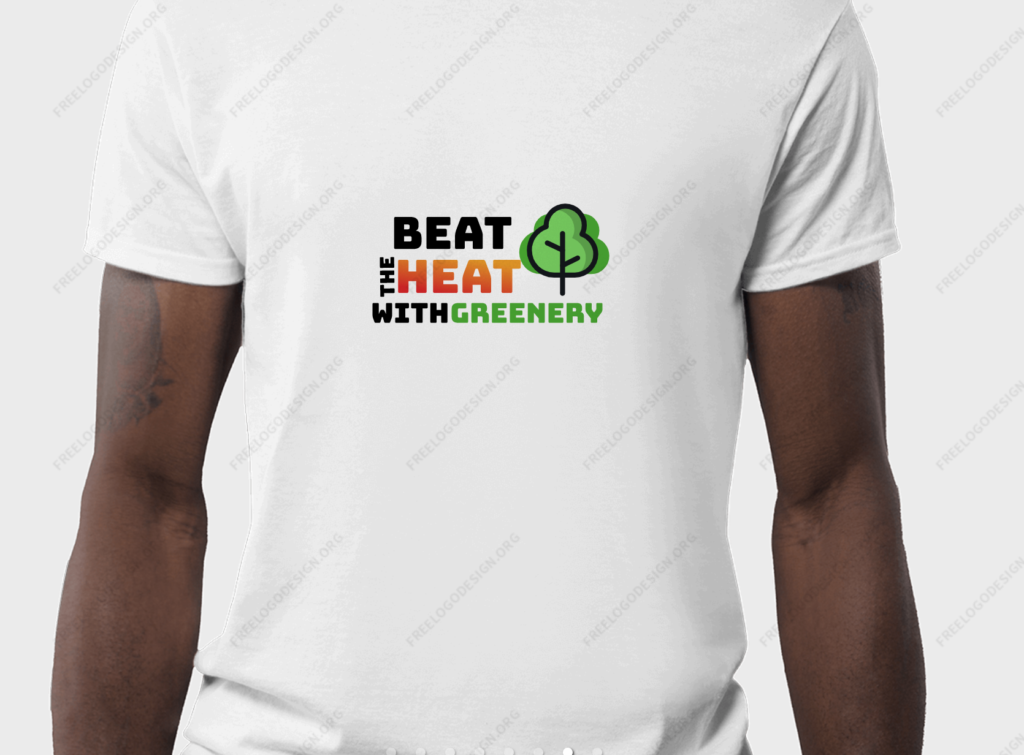Campaign for Change
The Urban Heat Mitigation Initiative (UHMI)

Mission
Large urbanized areas are subject to the urban heat island effect, a negative environmental issue that impacts the health of individuals and the overall environment in a city. Areas that experience the urban heat island effect have higher temperatures, greater amounts of pollution, and overall have more negative impacts on an individual’s physical, mental, and emotional well-being. Especially during the summer months when temperatures are much hotter, there is a direct disparity placed on those in the metropolitan environment from which they may experience temperatures ranging from 15-20 ℉ higher than in rural areas.
Explained in much more detail on the Problem Identification page, the overall infrastructure of metropolitan areas plays a significant role in the increase in temperature. Generally, urban areas are concentrated with buildings and roads that are darker in color which causes issues involving absorption and emission of heat. Limited green spaces in urbanized areas reduce the ability for the sun’s energy to be trapped, as well as reduce how much shade is provided for the residents of these areas. As a result, regardless of the time of day, the size of the city, or the season, heat islands are formed and negative consequences will arise.
Target Audience

Urban heat islands deserve a specific attentive focus on addressing the ways in which mitigation and prevention will occur. From an organizational perspective, there are some organizations that play an analytical role to collect data on specific communities that are facing intense issues with the heat. CAPA Strategies, for example, is using heat mapping to provide communities with detailed information on the intensity and humidity of their city. This sort of participation is beneficial in spreading information but it does not directly address the overall public but rather an audience that is interested at a higher and more educated level. On the other hand, I would like to propose a campaign for change that is focused on educating the general public – those who are directly impacted by urban heat each and every day and may not have access to or knowledge of organizational data. The overall target audience for this specific campaign will be teenagers and adults who spend their time on social media to obtain and share information.
Objectives
The main objectives of my campaign for change are to raise public awareness of the magnitude of the problem surrounding urban heat and provide the target audience with specific individual activities that they can participate in to help mitigate the problem. The campaign will feature a specific slogan that catches the attention of individuals, include merchandise that can be purchased, and showcase individual actions at a community level through social media tactics of graphic design and shared posts.
Internal and External Forces
There are a variety of internal and external forces that may strengthen and weaken the campaign for change. Internally, the brand overall is going to be something new that is not discussed much in public. This could pose as a potential weakness because there will need to be a great deal of work put into publicizing and promoting the need for change within urban environments. With that being said, the campaign also is strengthened by the communities that are directly affected and have noticed a change in their ability to maintain well-being in urban environments. There are significant influences that can come about through community participation and care for a problem. In addition, funding for the campaign may be a weakness in itself as someone needs to pay for the merchandise and promotion materials, however, there is federal funding for urban heat adaptation which could ease the negative forces.
Externally, there are many opportunities that will arise from a campaign aimed to address urban heat. The campaign will have an environmentally friendly focus that aims to put more green back into urban areas, therefore more individuals will focus on the importance of environmental protection as it relates to their everyday lives. More awareness and education may lead to smarter decisions when it comes to voting for those in politics, thus eventually improving the potential for additional funding, education, and change in urban environments.
Campaign Overview

The campaign to address the problem is the Urban Heat Mitigation Initiative (UHMI). UHMI will be the name of the program that aims to educate the public and provide the public with the various tools to address the problem. UHMI will utilize social media platforms such as Instagram, Twitter, and Tik-Tok to create posts, videos, and share information related to urban heat. On each social media platform, there will be a source using linktree that connects viewers to this website, the other social media platforms, and the merchandise page created through HelloMerch that will feature t-shirts with the program’s main slogan.
Slogan

The slogan that will be used in the campaign is “Beat the Heat with Greenery.” When looking at the various ways in which urban heat has increased over time and weighing the strategies that are done on a global scale, it appears that there is a multitude of benefits that are associated with the reintroduction of vegetation to urban spaces. With this specific slogan, the hope is that conversation will be sparked among consumers as to how they may add greenery to urban environments to help prevent the negatives associated with the urban heat island effect. Whether it is to plant trees, introduce green roofs and walls to their homes, or attend zoning meetings to protest construction that will remove green spaces instead of adding them, individuals are able to create the conversation and share it with those with whom they are close to. Not only will the slogan be featured on posts throughout the social media platforms, but it will be put on the shirts that are for sale to spread awareness of the information presented by UHMI.
Price & Promotion
As briefly mentioned above, the cost of items will be something that is important to consider. For the most part, the burden of merchandise costs will be placed on consumers who are willing to buy the shirts that are available. However, to get the initiative started, it would be in the best interest of the program to provide shirts for free to the first 100 individuals who follow the Instagram account. Due to the need for capital to purchase these shirts, the campaign would need to pool money from state and federal funding. Furthermore, the funding that is pooled will also be used for social media promotion to get the name of the campaign out to the public. It is not easy to just create an account without having the capital to pay the social media website to spread the accounts to the public. In addition, there are various sources of communication that may reach a greater target audience. Local newspapers, radios, and television are areas that are outside of social media for those who may refuse to participate in online activities.
Evaluation and Monitoring

The success of the campaign depends on a number of factors. For one, the number of shirts that are sold is a response to the participation of those who follow the campaign. There will be a specific focus put on the number of shares per post, the traffic generated between each platform through cookies, and paying attention to comments and likes associated with each post. The campaign will have specific milestone goals (1,000, 10k, 20k followers, etc) and at each milestone, the campaign will create a thank you post to show community members that we are thankful for their participation and to encourage further conversation of research related to urban heat mitigation. For those who are interested in volunteering to help run the campaign, help will be needed to maintain an active status on social media, as well as to create videos that are detailed and influential.
Overall, the campaign may struggle to be successful in its early stages due to various hurdles and barriers that are faced through promotion. Individuals may merely glance over the page as it is sponsored which may be a weakness but this weakness shall be tackled through physical interaction that is created at a community level. The campaign must not only have a focus online but through the shirts and connections that will be made when individuals are discussing the meaning of the slogan, there may be a positive change to come about. The campaign may struggle to receive funding which may be a barrier, but if there are enough volunteers who are willing to fundraise to make a change in their specific urban environment, that could be a potential way to address that issue. Traveling from city to city and physical interaction with community members through testimony will be key to starting this campaign and that would be done by myself and whoever I can encourage to participate with me to volunteer and spread the message as to how cities can “beat the heat with greenery!”